
Mountain Streams --Vol.4--

The entrance of the Noro River in a misty rain.
The Birth of Killer Bee
Thus I was wondering how to fish the sleeping char in the source of the Kotaki River. Although I had a desire to do something, I completely forgot about them because I had no more chance of seeing them for a while.In those days I often visited the creek named Hayakawa, too. This creek flowed down from the Japanese South Alpine Mountain Range and was one of the sources of the River Fuji. Along the creek was there a famous hot-spring resort named Nishiyama Spa. The creek upstream was called the Noro River. It used to be a magnificent creek, where crystal-clear water flowed on its river bed covered with huge rocks. But 5 years after I became a frequent visitor there, a large typhoon that ran through the Japanese South Alpine Mountain Range utterly destroyed the creek. There used to be a big hut at the bank Hirogawara, the start of a trail up a mountain. But it disappeared without leaving a trace and the beautiful creek downstream reduced to a mass of sand and stones. Some years later when the road was restored I visited there to find it in miserable condition. Later a super path through the forest was completed and now the area is completely different from those days. However, to my extreme joy, the downstream basin once buried beneath sand has been restored little by little for these several years.

In the 1970s, the Noro River held many big rocks and good pools.
Summer of the Noro River
I usually visited the Noro River from the middle of May when the road was open. The river had rather rich water before the first half of the fishing season but always low water in the midsummer. Since then I did nothing but fished in the pond between the large rocks, one by one. Always clear and transparent, the water in the dry season was completely seen through. I could see fish swimming from afar, so I fished from afar, too. That was one of the greatest charms of the Noro River. When I stood nearly 20m away from the wide pool or long, slender current and cast my line as far as possible, I felt that was the true charm of fly fishing. It was really thrilling and I was happy. The mainstream of the Chikuma River had a lot of those points, whereas the Kimpusan River not so many.
A beautiful char with olive back and orange belly in the Noro River.
Then the water became still lower and I could not see fish any more. For fish did not come up to the sunny spot that was clearly visible from afar. I chose the smallest possible fly in that situation. Grey Sedge, Silver Sedge, Cinnamon Sedge and Winged Caperer, tied on size 18 hook, all of which had flat wings, were drifted in the middle of the calm pool. It was true that a large pool has got one or two char or yamame trout that were cruising in the daytime, looking for the bait. That type of fish spotted my fly quickly, came up to it slowly and bit it quietly.

When the water was low, I enjoyed casting and catching fish away from the pool.
After those fish were landed, the pool became quiet again. Since I saw a lot of fish before the dry season, I wondered where fish had gone. Looking carefully through the pool, I could see some shadows of sleeping fish in the shade of the fallen tree or behind the large rock. But most of them made quite dull response to the fly. Even if the fly was drifted over them, they came up to it so late that I nearly gave up. Don't they eat the bait in daytime? Do they sleep in daytime because they know they can get no good bait? Now I remember my old char that was sleeping in the huge mass of remaining snow over the Kotaki River. Thinking how to wake up fish, I tried various patterns. Fortunately, I had easy access here and it was very easy to find sleeping fish. It was a very convenient spot for me.

A varaiety of early Killer Bee with red, grizzle and black hackles.
I never had difficulty in catching the fish that were cruising alone in the low water. They cruised slowly in the pool in order to eat the bait. When I drifted the fly, they always bit it. All I stuck to was not to drift the fly just in front of the fish or not to use too large flies. Any pattern would do as far as it was smaller than size 16. But ant patterns did not get a good achievement just as in other creeks although there were so many ants in the banks. Actually countless winged ants sometimes stayed around the head of the small pool.
I first tried a small Black Coachman because it had not only got a remarkable achievement in the Chikuma River, the Kotaki River and the Noro River but also been very effective to sleeping fish. I tried to tie it on size 16 and 18 hook.

A char caught by the Killer Bee.
My choice proved to be right. Fish responded the fly much better than before, if not dramatically. I wanted to know whether this change was due to peacock or not. I knew this problem could not be judged only from this point of view but I was eager to know. What will happen if I use the fly mainly made of peacock or similar materials? I wanted to test it immediately but I could not find that type of dry fly anywhere, although there was Alexandra, a guaranteed wet fly.

Killer Bee with black hackle.
When I selected the tippet of Amherst pheasant for Black Coachman, Amherst's head happened to catch my eye. It was covered with lustrous green small feather. That's good! No angler had ever used it as a fly material. I plucked two of small feathers and tied them flat on size 14 and 16 hooks. Needless to say, I tied peacock, especially lustrous herl from sword tail on the body. I also tied red or yellow goose quill on the rest of the body and made the hackle black. Thus a new fly was born. I rushed to the creek of the Noro River with the new fly. Its performance was a great success. Although it was not easy to find it in the shade, fish responded incomparably more briskly than before. I was often surprised at the fish jumping from the pool bed. Since then Killer Bee became the indispensable fly to me in the low water in summer.
-- To be continued --
- NET SHOP INFORMATION

SL6 Black Spey Hooks
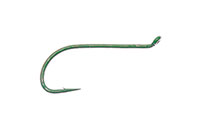
DU3 Limerick Spinner Hooks
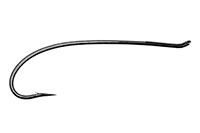
SL4 Single Bartleet Hooks

XD1 Tube Fly Double Hooks

DD2 Flat Perfect Hooks
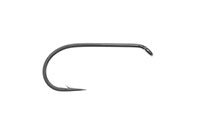
DD1 Black Terrestrial Hooks
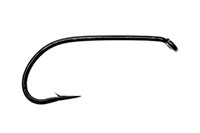
TD4 Old Limerick Wet Hooks

DU1 Silver May Hooks

MU1 Flat Midge Hooks

LD3 Long Limerick Hooks

TD2 Summer Sproat Hooks
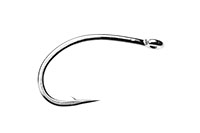
XS1 Tube Single Silver Hooks

TD6 Siver Sedge Hooks

SL5 Black Spey Hooks

DU3 Limerick Spinner Hooks
- TROPHY CLUB
- FLY SHOW
- EXHIBITION
- MASTERS`
- FLY DRESSING CONTEST Archives
- TRAVELLER Archives
- TACKLE IMPRESSIONS Archives
- ANGLERS` PHOTO GALLERY Archives
- ----------------------------------------------
- トロフィークラブ
- フライショー
- エキシビション
- マスターズ
- フライドレッシング・コンテスト・アーカイヴ
- トラヴェラー・アーカイヴ
- タックル・インプレッション・アーカイヴ
- アングラーズ・フォトギャラリー・アーカイヴ
株式会社サワダ 185-0021 東京都国分寺市南町3-13-4
SAWADA'S INC. 3-13-4 Minamicho, Kokubunji, Tokyo 185-0021, Japan
写真・ドキュメントの無断転載を禁じます。
All the images and documents found on this site are owned by Ken Sawada and may not be used without permission.
But, link to this site is FREE.
Copyright © 2000 - 2025 SAWADA'S INC.. All rights reserved.
SAWADA'S INC. 3-13-4 Minamicho, Kokubunji, Tokyo 185-0021, Japan
写真・ドキュメントの無断転載を禁じます。
All the images and documents found on this site are owned by Ken Sawada and may not be used without permission.
But, link to this site is FREE.
Copyright © 2000 - 2025 SAWADA'S INC.. All rights reserved.
